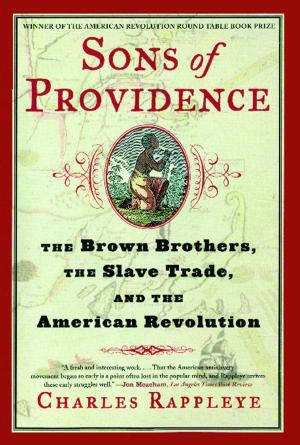| Author: | Stewart Gill Owen | ISBN: | 9781311789891 |
| Publisher: | Stewart Gill Owen | Publication: | September 22, 2015 |
| Imprint: | Smashwords Edition | Language: | English |
| Author: | Stewart Gill Owen |
| ISBN: | 9781311789891 |
| Publisher: | Stewart Gill Owen |
| Publication: | September 22, 2015 |
| Imprint: | Smashwords Edition |
| Language: | English |
The story begins in the early hours of 31 July, 1917 in the Flanders region of Belgium. Soldiers of the Royal Lancastrian Light Infantry climb out of their fortified trench positions to advance to the German lines. This is the start of the main battle of Passchendaele. Although still young at the age of twenty, Corporal Herbert Edward Williams is a veteran of combat. He’s struck down after only making a few yards across no-mans-land and dies at a casualty clearing station a few days later. That same morning, twenty one year old Lieutenant Kurt Lehmann of the German Fourth Army is killed as he defends his units’ trenches.
In July 1932, Herbert’s parents John and Annie Williams make their annual trip to Flanders region of Belgium to visit the grave of their son who is buried in the Dozinghem Military Cemetery. With them is their twenty two year old daughter Emma and their youngest son Herbert who is fourteen. Herbert had been named after his brother, the brother he never knew. Also making the trip is Annie’s sister Mary Reynolds and her husband, Henry. They stay in Belgium at Madame De Vos’s hotel in Poperinge.
Erich and Martina Lehmann from Mainz in Germany are also in Flanders, to pay their respects to the memory of their son Kurt whose final resting place is in the German Langemark Cemetery. Accompanying them is their twenty-three year old son, Peter.
The date of 1932 is significant because in the summer of that year Hitler and the Nazi Party were threatening to take control of Germany and there was a growing fear of another war. John Williams refuses to accept that the Germans will fight again but the De Vos family and the Lehmanns’ do not share his confidence.
After a number of predictable confrontational incidents, an uneasy truce is established between the two families. The story moves back and forth in time and location. From Mainz to the Williams’ home town of Blackburn in Lancashire and to the battlefields of Belgium and France. The book focuses on the two sons’ experiences in the war and to the domestic life of both families at home.
As well as coming from different countries, they are also from very different social backgrounds. At the end of the story both families realise that they have much in common and identify a shared sense of bereavement and loss despite the obvious differences of class, status and nationality. Having lost their sons in one conflict, both families fear that they may have to make further sacrifices.
This is a story about the victorious and the defeated, a story of how the fallen of two nations are remembered or forgotten. Two Sons is about the emotions, the passion and the feelings that many of us share, regardless of nationality, class, faith and status.
The story begins in the early hours of 31 July, 1917 in the Flanders region of Belgium. Soldiers of the Royal Lancastrian Light Infantry climb out of their fortified trench positions to advance to the German lines. This is the start of the main battle of Passchendaele. Although still young at the age of twenty, Corporal Herbert Edward Williams is a veteran of combat. He’s struck down after only making a few yards across no-mans-land and dies at a casualty clearing station a few days later. That same morning, twenty one year old Lieutenant Kurt Lehmann of the German Fourth Army is killed as he defends his units’ trenches.
In July 1932, Herbert’s parents John and Annie Williams make their annual trip to Flanders region of Belgium to visit the grave of their son who is buried in the Dozinghem Military Cemetery. With them is their twenty two year old daughter Emma and their youngest son Herbert who is fourteen. Herbert had been named after his brother, the brother he never knew. Also making the trip is Annie’s sister Mary Reynolds and her husband, Henry. They stay in Belgium at Madame De Vos’s hotel in Poperinge.
Erich and Martina Lehmann from Mainz in Germany are also in Flanders, to pay their respects to the memory of their son Kurt whose final resting place is in the German Langemark Cemetery. Accompanying them is their twenty-three year old son, Peter.
The date of 1932 is significant because in the summer of that year Hitler and the Nazi Party were threatening to take control of Germany and there was a growing fear of another war. John Williams refuses to accept that the Germans will fight again but the De Vos family and the Lehmanns’ do not share his confidence.
After a number of predictable confrontational incidents, an uneasy truce is established between the two families. The story moves back and forth in time and location. From Mainz to the Williams’ home town of Blackburn in Lancashire and to the battlefields of Belgium and France. The book focuses on the two sons’ experiences in the war and to the domestic life of both families at home.
As well as coming from different countries, they are also from very different social backgrounds. At the end of the story both families realise that they have much in common and identify a shared sense of bereavement and loss despite the obvious differences of class, status and nationality. Having lost their sons in one conflict, both families fear that they may have to make further sacrifices.
This is a story about the victorious and the defeated, a story of how the fallen of two nations are remembered or forgotten. Two Sons is about the emotions, the passion and the feelings that many of us share, regardless of nationality, class, faith and status.















